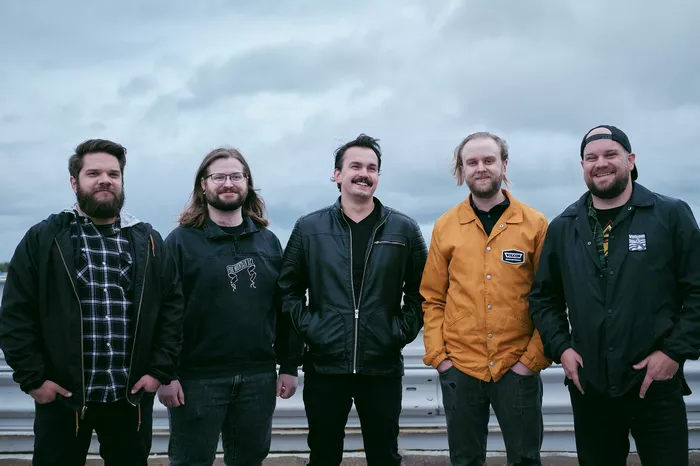In the vast landscape of heavy metal subgenres, one stands out for its uncompromising intensity and ferocity: brutal death metal. Characterized by its lightning-fast guitar riffs, guttural vocals, and relentless drumming, brutal death metal pushes the boundaries of sonic extremity. For fans of the genre, it’s not just about listening to music; it’s about experiencing a visceral assault on the senses. In this article, we’ll delve into the world of brutal death metal bands, exploring their history, defining characteristics, notable acts, and the enduring appeal of this extreme form of musical expression.
Origins and Evolution
Brutal death metal emerged in the late 1980s and early 1990s as an offshoot of death metal, itself a subgenre of heavy metal. While death metal bands like Death, Possessed, and Morbid Angel laid the groundwork with their aggressive sound and macabre lyrical themes, brutal death metal took these elements to the extreme.
One of the defining features of brutal death metal is its emphasis on technicality and speed. Guitarists employ techniques like tremolo picking and rapid-fire riffing, often incorporating complex arrangements and dissonant chord progressions. Drummers showcase blistering blast beats and intricate double bass patterns, driving the music forward with relentless intensity. Vocalists typically employ guttural growls and shrieks, adding to the genre’s overall sense of brutality.
As the genre evolved, bands began to experiment with increasingly extreme elements, pushing the boundaries of what was musically possible. This led to the development of subgenres like slam death metal, characterized by its slower tempo and emphasis on groove, and technical death metal, which focuses on complex instrumentation and virtuosic musicianship.
Notable Bands
Numerous bands have made significant contributions to the brutal death metal genre, each bringing their own unique style and approach to the music. Among the most influential acts are:
Cannibal Corpse: Formed in Buffalo, New York, in 1988, Cannibal Corpse is arguably the most iconic brutal death metal band of all time. Known for their graphic lyrics and brutal sound, the band has released a string of classic albums, including “Tomb of the Mutilated” and “The Bleeding.”
Suffocation: Hailing from New York, Suffocation is credited with pioneering the “New York death metal” sound, characterized by its technical complexity and crushing heaviness. Albums like “Effigy of the Forgotten” and “Pierced from Within” are regarded as genre-defining classics.
Nile: With their unique blend of brutal death metal and Egyptian themes, Nile has carved out a distinct niche within the genre. Their intricate instrumentation and epic songwriting have earned them a dedicated following worldwide.
Dying Fetus: Known for their politically charged lyrics and punishing grooves, Dying Fetus has been a force in the brutal death metal scene since the early 1990s. Albums like “Destroy the Opposition” and “Descend into Depravity” showcase the band’s relentless aggression and technical prowess.
Origin: Formed in Kansas in 1997, Origin is renowned for their mind-bending technicality and breakneck speed. Their albums, such as “Informis Infinitas Inhumanitas” and “Antithesis,” are masterclasses in extreme metal musicianship.
These bands represent just a fraction of the diverse and vibrant brutal death metal scene, which continues to evolve and expand with each passing year.
The Appeal of Brutal Death Metal
For fans of brutal death metal, the appeal lies in its unrelenting intensity and cathartic power. The music offers an escape from the mundane realities of everyday life, transporting listeners to a realm of pure sonic chaos. The visceral nature of the genre allows fans to channel their aggression and frustration in a healthy and constructive way, providing a sense of release and empowerment.
Moreover, brutal death metal serves as a form of artistic expression, allowing musicians to explore themes of death, decay, and the darker aspects of human existence. Through their music, bands confront taboo subjects and challenge societal norms, pushing the boundaries of acceptability and provoking thought and introspection in the process.
In addition to its musical and thematic complexity, brutal death metal also fosters a strong sense of community among its fans. Concerts and festivals provide opportunities for like-minded individuals to come together and celebrate their shared passion for extreme music, forging connections that transcend geographical and cultural boundaries.
Conclusion
Brutal death metal is not for the faint of heart. It is a genre that demands attention and commands respect, offering a sonic experience like no other. With its blistering riffs, thunderous drumming, and guttural vocals, brutal death metal pushes the boundaries of musical extremity, challenging listeners to embrace the darkness within themselves.
As we’ve explored in this article, brutal death metal has a rich and storied history, with countless bands making their mark on the genre over the years. From pioneers like Cannibal Corpse and Suffocation to modern innovators like Nile and Origin, the world of brutal death metal is as diverse and dynamic as ever.
So, whether you’re a seasoned veteran of the scene or a newcomer looking to explore the darker side of heavy metal, one thing is certain: in the world of brutal death metal, there are no compromises, only pure, unadulterated brutality.

